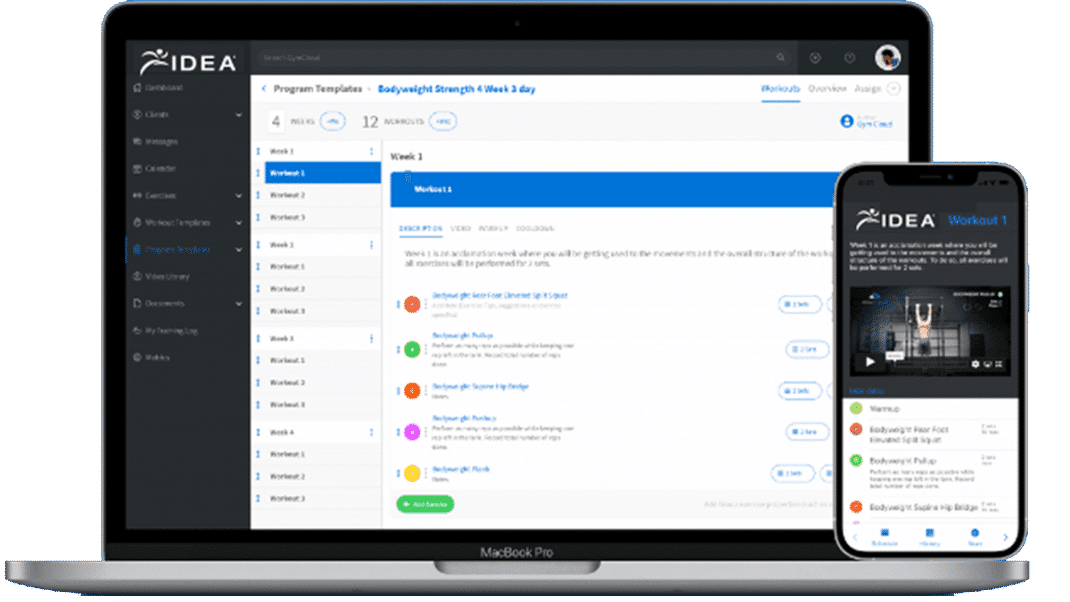The Missing Skill Set That Will Make or Break Your Personal Training Career
Improving your coaching ability will help you build a sustainable business.

The success of your personal training career rests on your building a loyal client base. If doing so has eluded you, or if you’ve found yourself constantly chasing new business, perhaps it’s time to look at your training practices to see if you’re missing an all-important skill: coaching.
Training Versus Coaching
You may say, “I already coach my clients.” But what do you consider coaching to be?
- Designing programs that, in theory, get your clients results?
- Motivating clients, and “bringing the energy” to the training session?
- Creating nutritional plans for your clients?
- Coaching and cuing exercises while your clients are doing them?
All of the above are part of the coaching process, but they’re not enough to create a sustainable and true transformation for your clients.
Many personal trainers get stuck in the “savior” mode, where clients hire a trainer to fix their problems and do everything for them. The trainer creates the exercise programs, brings the energy to the sessions and outlines “done-for-you” nutrition programs; from these efforts, the clients get results in a pretty short amount of time. Then, life happens and things start to fall apart. The programs become difficult to maintain and the clients miss some sessions, becoming frustrated with the plateaus and the lack of results.
The trainer is frustrated because the clients aren’t following the outlined program, and the clients are frustrated because they “just can’t do it.” Clients beat themselves up, and they fall back into the bad habits that inspired them to seek a trainer in the first place.
Have you experienced this?
Less Telling, More Coaching
The solution is to move yourself into a co-active coaching role, where you work with your clients to find ways to empower them to make choices that are not overwhelming and that can be sustained over the long term.
A coach is a guide who walks beside clients and helps them make better decisions. In fact, the clients have all the answers deep inside them; the coach just helps bring those answers to light. The coach will sometimes step ahead to lead the clients and will sometimes step behind to push and challenge them.
A coach
- creates programs and coaches exercises, while paying careful attention to how the clients learn;
- works on how to improve lifestyle and performance outside the gym, as well as seeking measurable increases inside the gym;
- finds the right steps to help clients change their nutrition and lifestyle habits, so that behaviors match goals;
- emphasizes improvement in recovery efforts and stress levels, to achieve more significant results and to enhance quality of life;
- works on mindset, to help clients break through self-limiting beliefs that prevent the plan from working; and
- helps clients respond in a powerful way that’s in line with their values and goals—regardless of what others around them say or do.
How to Become a More Effective Coach
How does a coach help clients develop sustainable practices?
Here are five elements of top-notch coaching that will help you truly understand your clients and see how to help them achieve the long-term results they desire.
Listening
Of course, a coach listens to the words that clients say. But more importantly, a coach aims to understand what each client is saying on a deeper level. Here’s how:
- Listen for the meaning behind the story; by connecting on this level, the coach will deepen a client’s learning.
- Search for the client’s vision, values and purpose.
- Listen for resistance, fear, backtracking and the voice of the saboteur—the voice that is pointing out the client’s shortcomings and bringing up all the reasons why the program won’t work.
The coach pays attention on many levels simultaneously, to hear where clients are succeeding in their process and where they are out of balance. The coach uses this information to determine the most effective path toward each client’s self-improvement.
Intuition
Western culture doesn’t validate intuition as a reliable means of drawing conclusions or making decisions, so we hesitate to state what our intuition is telling us. We hold back because we don’t want to appear foolish. Yet, intuition is one of the most powerful gifts coaches can give.
As coaches, we receive a great deal of information from our clients. Then, in the moment of coaching, we combine that information with previous knowledge as well as our personal experience—our experience not only of coaching but also of operating in the world. For most coaches, intuition is a skill that takes practice to develop. But it’s extremely valuable, as it helps us derive more information than we could ever analyze consciously.
Curiosity
One of the most important elements of great coaching is understanding that clients are capable and resourceful, and that they themselves hold the answers to the solutions they seek. It is the coach’s job to ask the questions that stimulate client curiosity. Helping clients become curious about the process and about their own potential creates an open, inviting, spacious, almost playful environment.
People don’t have to be “forced” to do things they don’t like to do in order to get the results they want. Rather, by promoting curiosity, coaches enable their clients to find ways to make improvements by doing things they want to do.
Because they’re on their clients’ side in this exploration, coaches can ask powerful questions and break through old defenses. When clients learn to be curious about their own lives, it reduces pressure and lowers risk. Plus, curiosity can make clients more willing to challenge themselves. Instead of focusing on what they can’t do, they begin to wonder about all the things they can do.
Action and Learning
Now that you have developed a better understanding of your clients and stirred their curiosity, the goal is to combine learning with action.
Learning and action are equal and complementary forces. Learning generates resourcefulness and expands possibilities; in addition, it brings about a desire for change.
Coaching is not only about action, about getting things done. It is also about continuing to learn, especially to learn how an action contributes to progress—or does not. Mahatma Gandhi said, “There is more to life than increasing its speed.” In the same way, there is more to life than actions performed without understanding how they affect one’s life—or the lives of one’s clients.
Self-Management
To truly keep the client’s agenda as a priority, the coach must get out the way, which isn’t always easy to do. Self-management is the coach’s ability to set aside personal opinions, preferences, pride, defensiveness and ego. This means that clients are allowed to take responsibility for their progress, while the coach becomes a resource for doing so. The light should shine on the clients, and not on the coach.
Transitioning from being a trainer, who tells clients what to do, to being a coach, who allows clients to lead the way, will lead you to long-term, effective relationships with your clients. It leads to greater client happiness, and it allows you to focus more on coaching and less on chasing new business.
Luka Hocevar
Luka has made a name for himself as one of the premier trainers in Washington state as well as one of the up and coming strength coaches in the country, helping clients and athletes from all walks of life achieve their personal physique and performance goals. Luka also speaks nationally and internationally on topics such as effective and efficient program design, running successful results driven fat loss boot camps, basketball strength and conditioning, as well as fitness business strategies and how to build an extremely successful training facility. To contact Luka about training and/or speaking opportunities, e-mail him at [email protected].





